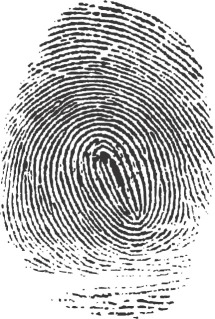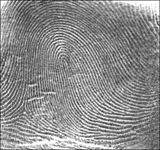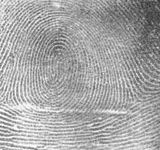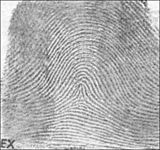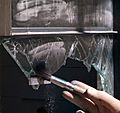Fingerprint facts for kids
A fingerprint is a trace of a human finger left on a surface. Human fingers have small structures on them (like mountains and valleys). These structures are unique in every human; they can be used as means of identification.
There are many different ways to take fingerprints. Forensic scientists use these techniques to identify a person.
Nowadays have been discussion about using fingerprints to identify a person also with electronic devices.
Contents
Types
Before computerization, manual filing systems were used in large fingerprint repositories. Manual classification systems were based on the general ridge patterns of several or all fingers (such as the presence or absence of circular patterns). This allowed the filing and retrieval of paper records in large collections based on friction ridge patterns alone. The most popular systems used the pattern class of each finger to form a key (a number) to assist lookup in a filing system.
In the Henry system of classification, there are three basic fingerprint patterns: loop, whorl, and arch, which constitute 60–65%, 30–35%, and 5% of all fingerprints respectively.
Radial loops start on the thumb-side of the finger, the side closer to the radius. Whorls may also have sub-group classifications including plain whorls, accidental whorls, double loop whorls, peacock's eye, composite, and central pocket loop whorls.
Other common fingerprint patterns include the tented arch, the plain arch, and the central pocket loop.
Related pages
Images for kids
-
Nine fingerprint patterns identified by Jan Evangelista Purkyně
-
Female clerical employees of the Los Angeles Police Department being fingerprinted and photographed in 1928
-
The fingerprint sensor of a Lenovo ThinkPad T440p, released in 2013
See also
 In Spanish: Huella dactilar para niños
In Spanish: Huella dactilar para niños


